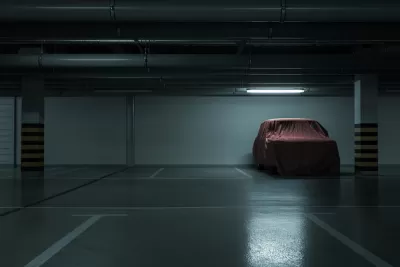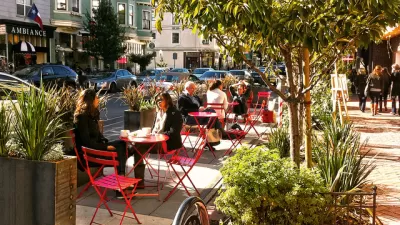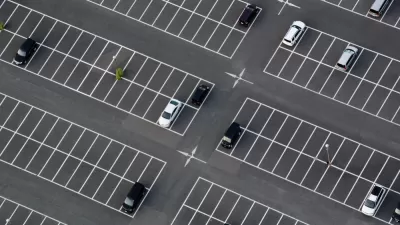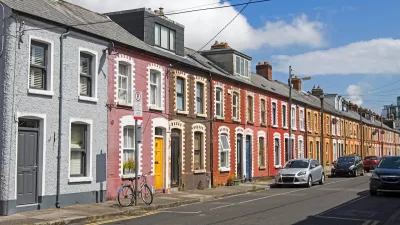After abolishing parking requirements, what can cities do to make the most of new space and revenue and avoid backlash?

In an opinion piece in Next City, Tony Jordan, president of the Parking Reform Network, ponders the next steps after the elimination of minimum parking requirements, a trend sweeping cities around the country.
This is a big break for cities, Jordan writes.
It’s not often that policymakers have an opportunity to make a simple change that simultaneously makes it easier to build abundant affordable housing, helps small businesses, encourages transit use, is rock-solid climate action, and actually saves the city money.
But Jordan argues that cities need to do more than just get rid of parking mandates. “Remove them and over time a few more apartments will be built at the expense of space for a few cars, but without further effort we might see little impact, or even worse, a backlash and the return of mandatory car storage.”
Jordan offers some suggestions for going beyond repealing minimums: “Cities should price their curbs to manage demand and spend the revenue on infrastructure and programs that improve safe, convenient, and equitable access to our communities for people traveling by any mode, not just in their cars.”
Jordan explains the value of curb space and how cities can leverage that value to improve safety for pedestrians and drivers, reduce vehicle miles driven, repurpose space for uses other than parking, and generate revenue.
FULL STORY: What Comes Next After Abolishing Parking Mandates?

Manufactured Crisis: Losing the Nation’s Largest Source of Unsubsidized Affordable Housing
Manufactured housing communities have long been an affordable housing option for millions of people living in the U.S., but that affordability is disappearing rapidly. How did we get here?

Americans May Be Stuck — But Why?
Americans are moving a lot less than they once did, and that is a problem. While Yoni Applebaum, in his highly-publicized article Stuck, gets the reasons badly wrong, it's still important to ask: why are we moving so much less than before?

Using Old Oil and Gas Wells for Green Energy Storage
Penn State researchers have found that repurposing abandoned oil and gas wells for geothermal-assisted compressed-air energy storage can boost efficiency, reduce environmental risks, and support clean energy and job transitions.

Updating LA’s Tree Rules Could Bring More Shade to Underserved Neighborhoods
A new USC study finds that relaxing Los Angeles’ outdated tree planting guidelines could significantly expand urban tree canopy and reduce shade disparities in lower-income neighborhoods, though infrastructure investments are also needed.

California's Canal Solar Projects Aim to Conserve Resources and Expand Clean Energy
California’s Project Nexus has begun generating electricity from solar panels installed over irrigation canals, with researchers and state agencies exploring statewide expansion to conserve water and boost clean energy production.

HHS Staff Cuts Gut Energy Assistance Program
The full staff of a federal program that distributes heating and cooling assistance for low-income families was laid off, jeopardizing the program’s operations.
Urban Design for Planners 1: Software Tools
This six-course series explores essential urban design concepts using open source software and equips planners with the tools they need to participate fully in the urban design process.
Planning for Universal Design
Learn the tools for implementing Universal Design in planning regulations.
Heyer Gruel & Associates PA
City of Moreno Valley
Institute for Housing and Urban Development Studies (IHS)
City of Grandview
Harvard GSD Executive Education
Salt Lake City
NYU Wagner Graduate School of Public Service
City of Cambridge, Maryland





























